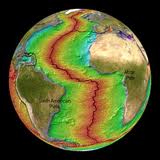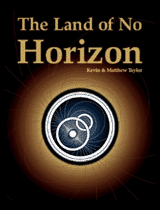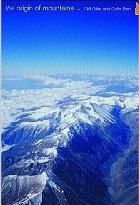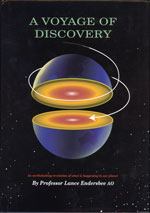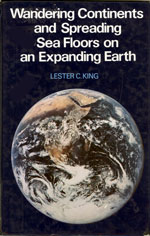(See right-hand panel for a full list of scientists, papers, and books)
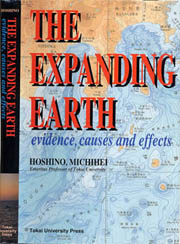
View count: 1
Pages: 295
Publisher: Tokai University Press
Year: 1998
ISBN: 4486031393
ISBN: 9784486031390
ln this book the author explains his ideas about the significance of basaltic underplating beneath the ocean floor which he believes was the cause of a remarkable rise in sea level and, which simultaneously and by the same means, led to continental uplift by basaltic underplating between the granitic crust and the upper mantle.
In Part 1, the author explains the evidence for sea-level change and he concludes that there is no crustal subsidence without the ejection of volcanic material or the ejection of water from the compaction of sedimentary sequences. He believes that crustal subsidence is not the real cause of sea level rise.
In Part 2, the author describes the geological evidence for changes in sea level based on studies of the continental shelf, the continental slope, oceanic trenches, guyots, coral reefs, landbridges and rift valleys.
In Part, 3 he describes his opinion on the origin of the upper layer of the Earth by the accumulation of Ca-rich (eucrite) chondrites and Mg-rich (enstatite) chondrites and subsequent history of the Earth's crust. From the enstatite chondrites, which made up the upper layers of the primordial Earth, came the atmospheric gases, sea water, granitic rocks, the Mg rich basalts and residual peridotites which made the upper-most mantle.
The author calls this stage the Granitic Stage and it corresponds with the Archean Era. Subsequently, the primordial Earth's surface was uplifted due to underplating by the layered igneous rocks and the uplifted platforms were subjected to intense denudation leading to broad peneplains. These peneplains (platforms) were transmuted into the deep ocean basins and major sedimentary basins. The furrows between the uplifted platforms became the geosynclines. This stage of evolution, (the Proterozoic and Plaeozoic Eras) the author has called the Transitional Stage.
The third stage, (the Mesozoic and Cenozoic Eras), of the history of the Earth's crust was characterised by marked basaltic underplating, the author's Basaltic Stage. In this stage the platforms which were less continentalised were uplifted as broad platforms; high mountains were created from mobile belts and.left behind,'i.e. non-raised, furrows and basins were left as rift valleys, oceanic trenches and intermontane basins. The basaltic underplating of the Basaltic Stage was also the cause of a marked rise in sea-level.
The history of the Earth's crust is a nonreversible process and in the Basaltic Stage the tectonic energy and the high heat source of the basaltic magma is the essential driving force for igneous activity, metamorphism, sedimentation, tectonism and sea-level change. Furthermore, the distribution and development of the modern Earth resulted from it.
Pages: 218
Publisher: BookSurge Publishing
Year: 2005
ISBN: 1419616633
ISBN: 978-1419616631
The Land of No Horizon is a book that confronts our greatest mysteries. It investigates such unknowns as; the origins of humanity, other intelligent life, the structure of the Earth, and the universe beyond.
Includes expanding earth.
The Origin of Mountains rejects the well-known hypothesis that plate tectonics and folding creates mountains and present a new theory for their formation. The authors argue that mountains arose by vertical uplift of a former plain, and by a mixture of cracking and warping by earth movements, and erosion by water. Cliff Ollier goes on to explore whether mountain building could have been responsible for the onset of the ice age. This highly illustrated book draws in evidence from mountain ranges all over the world.
Pages: 136
Publisher: Authors Choice Press
Year: 1996/2000
ISBN: 0595155901
ISBN: 978-0595155903
In this revolutionary work, Scarborough takes us from the Copernican idea of our sun-centered Solar System to the recent discoveries of giant exoplanets as he seeks to do no less than rebuild the foundations of knowledge of the origins and evolution of planets. A retired researcher, he offers new answers to questions that have puzzled philosophers for centuries: How did Planet Earth come into being? How and why did the planetary orbits of our Solar System form in a mathematical pattern? The answers will cause scientists to rethink beliefs about the origins and evolution of planets.
Scarborough addresses these profound questions with powerful substantive evidence that voids the need for speculative uncertainties now common in current theories of planet formation. The book opens with an insightful and startling account of his solution to the new Fourth Law of Planetary Motion explaining how the nebulous planetary masses attained their orbital spacing around the sun. With Kepler's Three Laws of Planetary Motion, the Four Laws reveal the explosive, dynamic origin of our Solar System some five billion years ago, and thus challenging the modified Laplace accretion concept of planet formation.
The author then gives definitive insights into how and why each planet evolves through five common stages of evolution in full accord with size.
Pages: 436
Publisher: Stanford University Press
Year: 1988
ISBN: 0804713642
ISBN: 978-0804713641
Websites: www.science.org.au/academy/memoirs/carey.htm en.wikipedia.org/wiki/Samuel_Warren_Carey
Pages: 300
Publisher: Lance Endersbee
Year: 2006
ISBN: 0646453017
Websites: www.monash.edu.au/news/newsline/story/689
Pages: 244
Publisher: John Wiley and Sons Ltd
Year: 1983
ISBN: 0471901563
ISBN: 978-0471901563
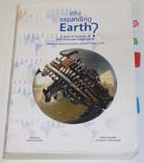
View count: 1
Pages: 465
Publisher: Published by INGV Publisher
Year: 2003
Websites: www.ingv.it

